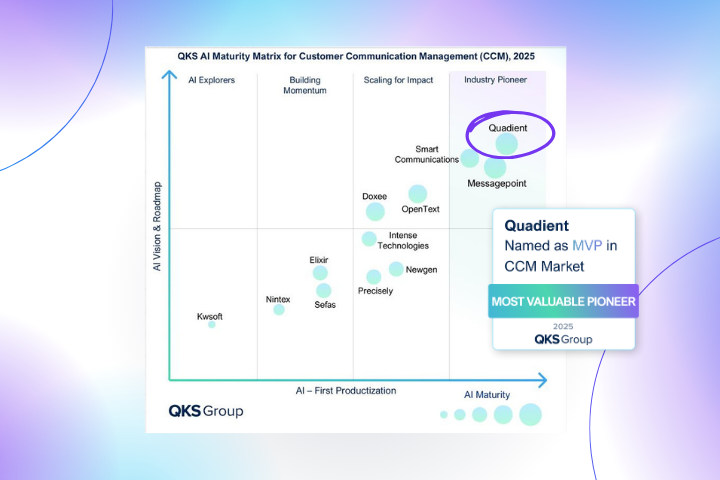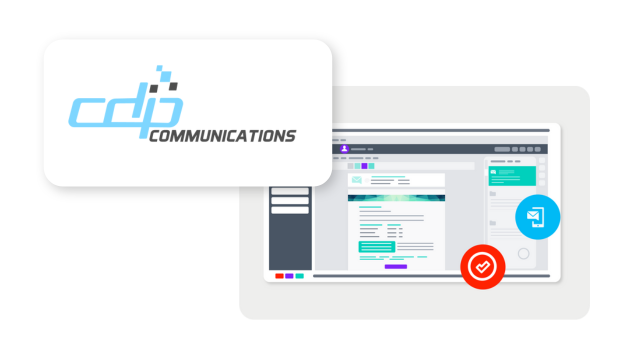
Businesses that can forecast when invoices are likely to be paid can budget for their own spend and therefore plan ahead. However, it is hard to arrive at this level of insight when accounts receivable (AR) information sits across systems and compiling information from them is a time-consuming manual exercise. A comprehensive AR platform provides a better way with artificial intelligence (AI) and machine learning (ML) capabilities that can transform cash flow forecasting.
This is the third in our blog series examining how to optimize AR processes to improve business efficiency, cash flow and customer satisfaction. The first considered the commoditization of AR to deliver business improvements through a single AR platform; the second focused on accelerating cash flow. Here, we dive into how AI in the AR platform enables cash flow to be forecast in support of informed business decision making.
Actionable insights from data
The UK government is committed to translating the potential of AI into growth, prosperity and social benefits for the UK through its ten-year national AI strategy published this year. However, for many businesses AI use is at a relatively low level. This Ernst & Young research on behalf of the Department for Digital, Culture, Media and Sport reveals 38 per cent of surveyed UK organizations are at the planning and piloting stage, while 33 per cent have neither adopted AI nor plan to.
This is a missed opportunity because AI can tap into vast data sets to reveal actionable business insights. In the case of AR, these insights help with cash flow forecasting.
➜ Transform Cash Flow Forecasting with the Ultimate AI Guide for Accounts Receivable
Making cash flow projections
A business deciding how much to order from its suppliers, and how much to spend on marketing campaigns, needs to know what its cash position will be in the future. It has the data it needs to make such a projection but getting at it can be difficult.
The data sits in customer invoices, together with an estimation of the length of time it will take for those customers to pay.
Without that information, the business is likely to wait before ordering stock, taking on an additional employee or committing to that marketing spend. It will be reactive, acting only when cash is physically there, instead of proactively planning activity based on when cash will be available.
Worst still, it may take the decision to borrow to fund these activities crucial to its operations and ongoing growth prospects. Without a quick, reliable and up-to-date cash flow forecast it won't be able to commit to spend because it doesn’t know if the cash will be there.
Adjusting in Real-Time
When creating a short-term cash flow forecast, this information is invaluable and is significantly more accurate than when the process is handled manually. That’s because the software’s machine learning is continually making adjustments based on real-time information. That means that the longer and more frequently you use the feature, the more accurate it becomes. In fact, the technology can make predictions with up to 94% accuracy. That means that should an event like a natural disaster or supply chain disruption occur, it is incorporated into the history and makes projections that include that event. That way, should it occur again, you’ve already got an accurate idea of the impact.
Featured Resource: The AI Guide for Accounts Receivable

Working With Your ERP
The software integrates with your ERP and analyzes data such as past payments and credit memos. It then leverages this information to create a customer credit profile that details average payment time, credit limit, average days overdue, and whether there are particular times of year or seasons that seem to impact payment behavior.
It's a useful tool that allows you to strategically plan how you approach your collections process, but the technology doesn't stop there. It also examines your accounts receivable as a whole and provides an analysis of your average customer. The data is then organized into charts that detail when you can expect invoices to be paid and how much money you will receive on any given day. It can be adjusted to reflect different time periods, including the next 7, 17, 30, or 60 days.
Consider integrating with NetSuite for seamless financial management and enhanced insights
Predictive AR analytics
The AR management platform uses AI algorithms to provide a projection of when, and how much, cash will come back into the business on any of the following 60 days. It accurately predicts when payments will be made based on each customer’s history of settling invoices.
In similar fashion, it will also predict what might not be paid, enabling staff to focus efforts where they’re most needed to avoid bad debt.
The platform 'learns' continuously from the inbuilt AI and ML so that projections always come from the most up-to-date data in the system.
Predictive AR analytics equip businesses to:
- Plan ahead, committing operational and investment spend with confidence
- Reduce the cost of working capital by negating the need to borrow, instead making spending decisions based on cash the business will have
- Avoid interest charges that come with borrowing
- Focus attention on customers where bad debt is most likely to occur
- Spend less time in enterprise resource planning (ERP) and finance systems, gathering data to generate a cash flow projection manually.
In addition, the platform builds up a history of payments over time providing historical trend records the business can draw upon. If an external factor, such as an extreme weather event or supply chain disruption, resulted in payment delays in the past, the business can predict how it may be impacted should a similar event occur again.
As part of an integrated AR management platform, AI helps with cash flow forecasting by predicting when cash will come back into the business based on customers’ paying behavior. This enables businesses to plan ahead, committing spend based on reliable forecasts and avoiding the need to borrow. It frees up finance staff from interrogating spreadsheets, databases and standalone systems to generate a cash flow projection manually.







